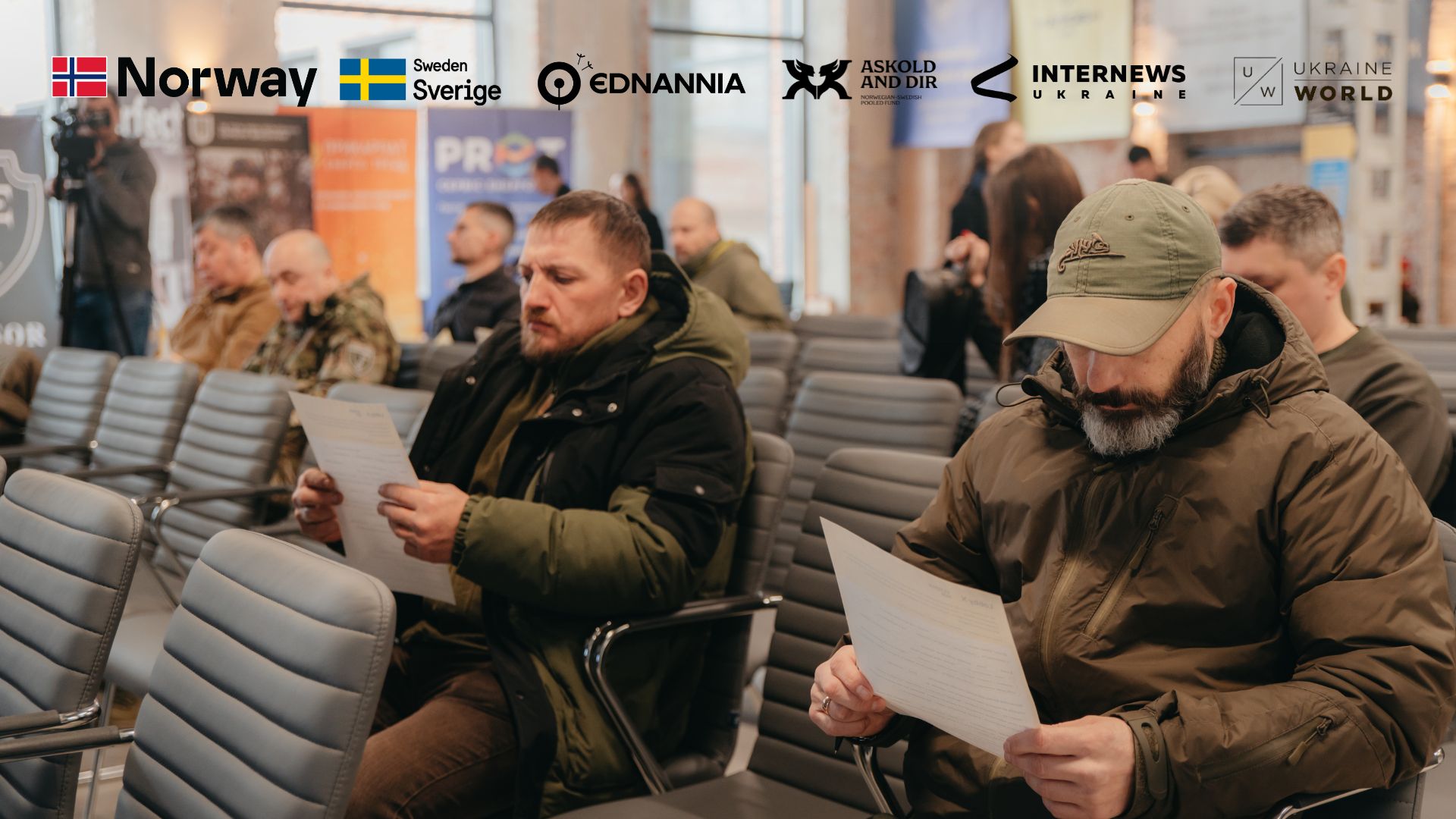
Employment has become a significant concern for veterans as they transition back into civilian life in Ukraine.
Before 2014, military service was viewed as a lifelong career, one that was stable and respected. Now, thousands of service members return to civilian life, facing discrimination, discouragement and the need to renew or completely change their professions.
According to Ukraine's Pension Fund, as of January 1, 2025, there are 365,999 registered war veterans, including more than 121,000 veterans with disabilities.
The Ministry for Veterans Affairs predicts that after the war, the number of veterans, together with their family members, could reach 5 to 6 million people, or roughly one in every six Ukrainians.
We spoke with the team at Lobby X Odarka Kozak, Manager for Veterans Project and Yustyna Dusan, Veteran's Career Consultant and Recruiter.
In 2022, Lobby X became the first to launch a structured recruitment campaign for the Armed Forces of Ukraine and in 2024, expanded to assist veterans in rebuilding their civilian careers.
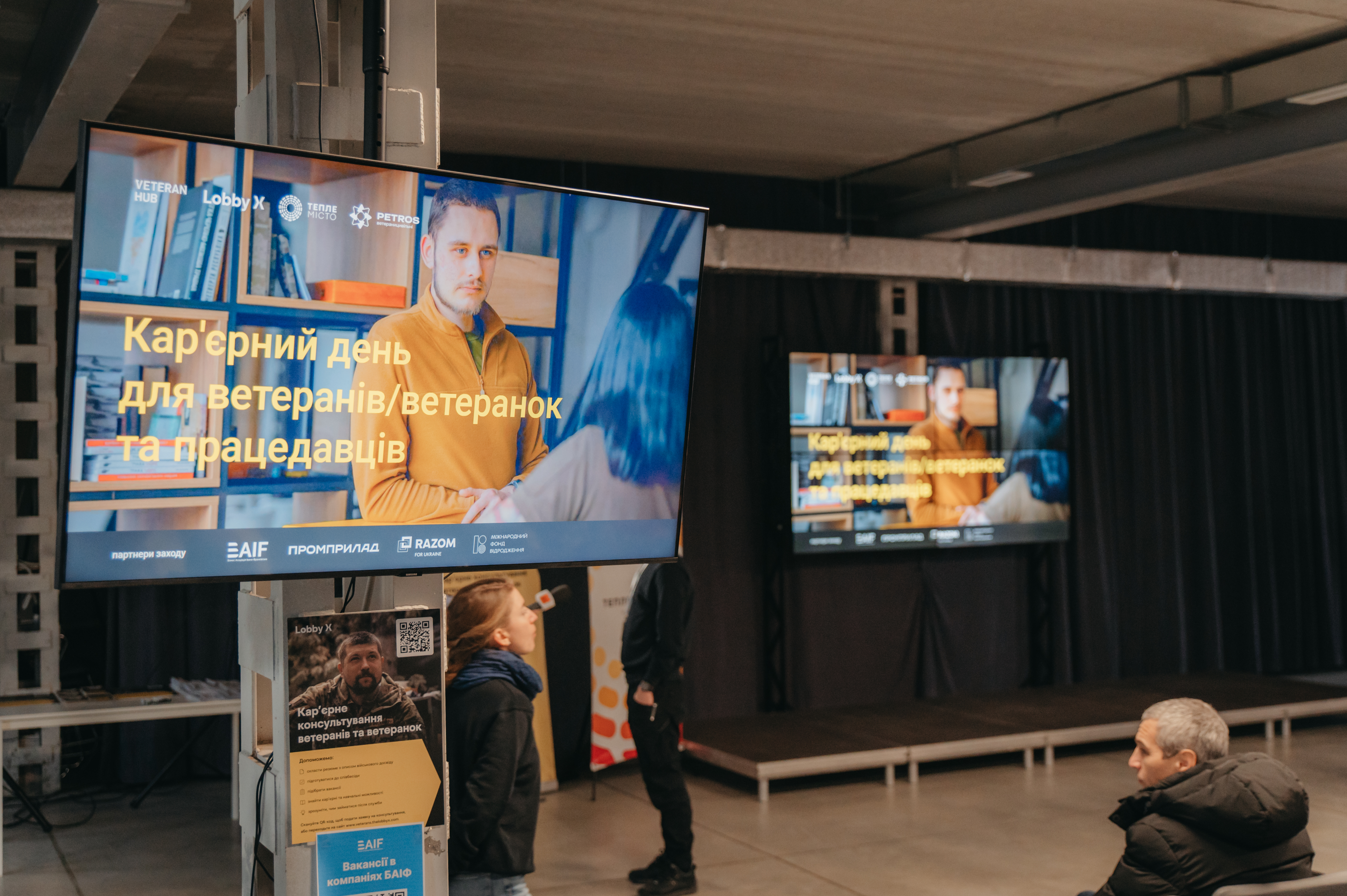
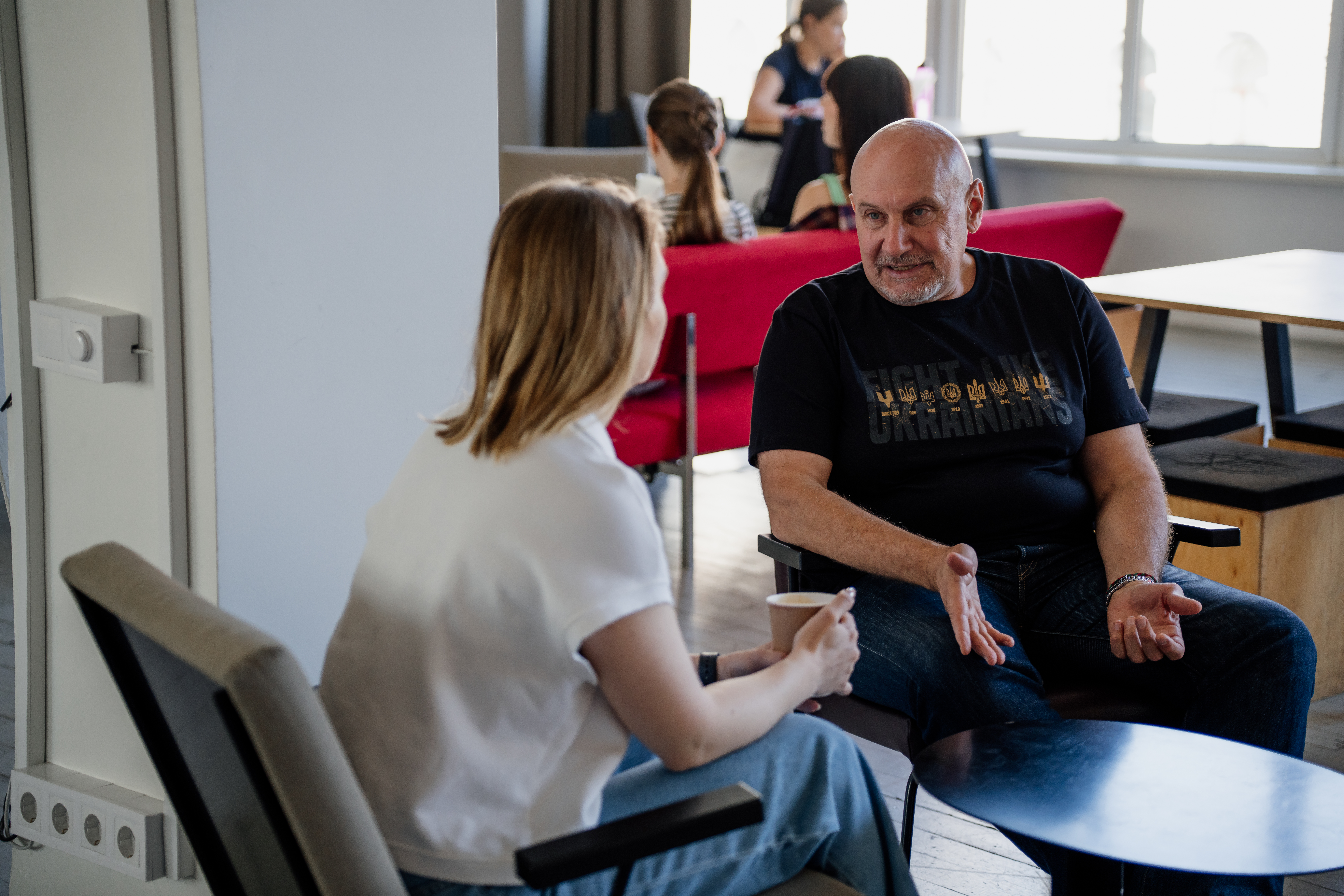
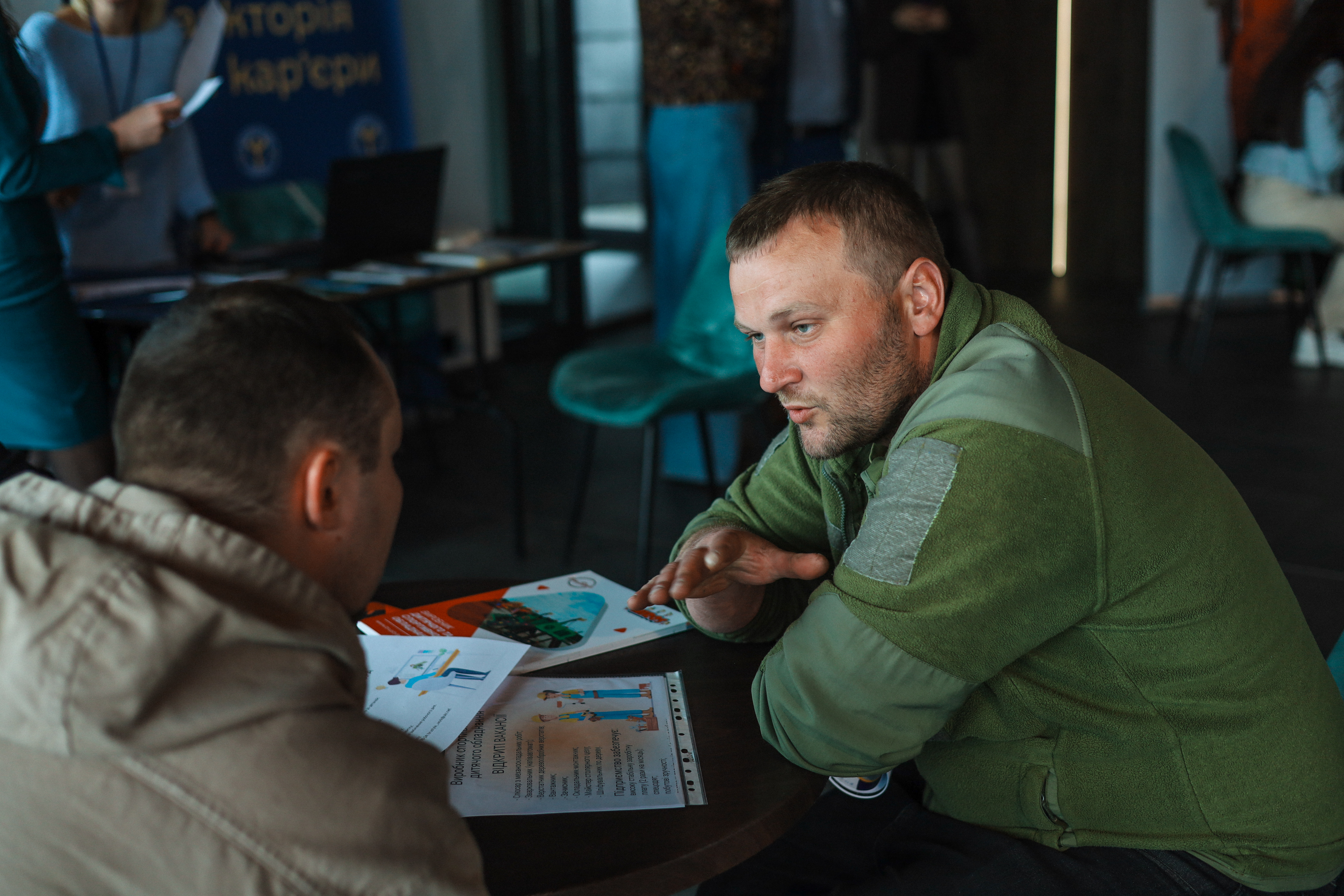
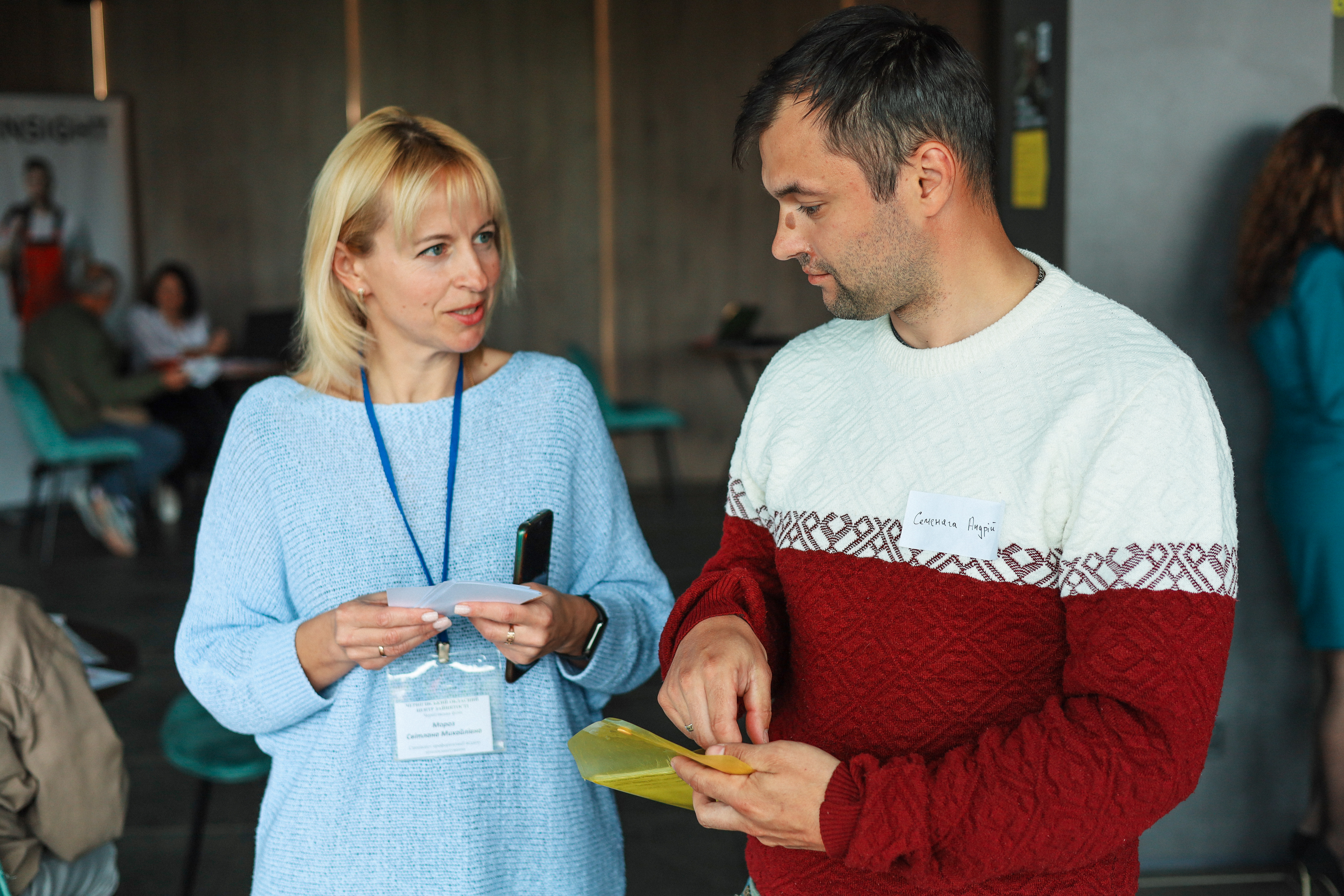
In our analysis, we explore challenges of building a career after military service and how veterans can move toward meaningful, well-matched work instead of being forced to settle for less.
1) No way back to "before"
Many veterans can't return to their previous jobs or lives: some of them lost their homes or communities because of the Russian occupation of their hometown, others have injuries or disabilities that make their former work impossible.
And for a lot of them, the mental shift is enormous - it's difficult to go back to who you were before the war.
2) Losing a sense of purpose
Serving in the army gave people a clear mission: to protect and matter, to serve a greater purpose, at the same time, civilian jobs and tasks can sometimes feel insignificant.
3) A job market that isn't ready for veterans
Many employers still hesitate to hire veterans. Some assume that they could be 'unstable" or "hard to manage" due to difficult emotional conditions.
Companies make statements about inclusion and open-mindedness, but in reality, they often seek a "perfect" candidate, rather than someone who tries to adjust after a war.
4) Regional inequality and lack of access to information
In small towns and villages, there are fewer job options, and many veterans are unaware that special career assistance programs even exist.
5) Gender and age matter
Female veterans could face a double glass ceiling :for being women and for being veterans.
Many of those who leave the army after sixty are discharged not because of injury, but because of age. In theory, they have more options: they can still work, learn or start something new. But in practice, age becomes another invisible barrier: stereotypes about being "too old" or "too slow" start to add up, or veterans believe they're no longer needed.
6) Unreal expectations
Alongside discrimination, there's another issue - idealisation. Society often expects veterans to be unbreakable and tireless. But veterans are, first of all, human beings with their weaknesses, hopes and dreams.
7) When going back feels easier than starting over
Some veterans re-enlist because they see no real place for themselves in civilian life.
8) When state programs are not enough
Veterans often face endless bureaucracy when trying to access government support. Many official programs feel formal or ineffective, they exist on paper but rarely meet real needs.
9) Lack of accessible jobs for veterans with disabilities
Wounded veterans often face very limited job opportunities: many workplaces are still not accessible and there are fewer job opportunities that fit their physical needs - such as flexible hours, remote work or time for rehabilitation.
10) Guidance for a new chapter
Veterans don't only need help updating a resume, often, they need help rebuilding a sense of direction or someone who can suggest possibilities that exist beyond military life.
Helping veterans return to civilian life is never about following a checklist, as every case is different and every story is unique. What proves most effective is an individual approach: one that recognises personal experience, state of health and motivation.
Individual career counselling plays a key role here. It's a form of step-by-step guidance that helps veterans find not just any job, but the right one for them. Sometimes it's as simple as rewriting a resume, however, in other cases, it means a complete career upgrade, such as retraining, setting new goals, or building confidence for interviews.
One year is not a long run, but the team has already set an example of how this approach works in practice.
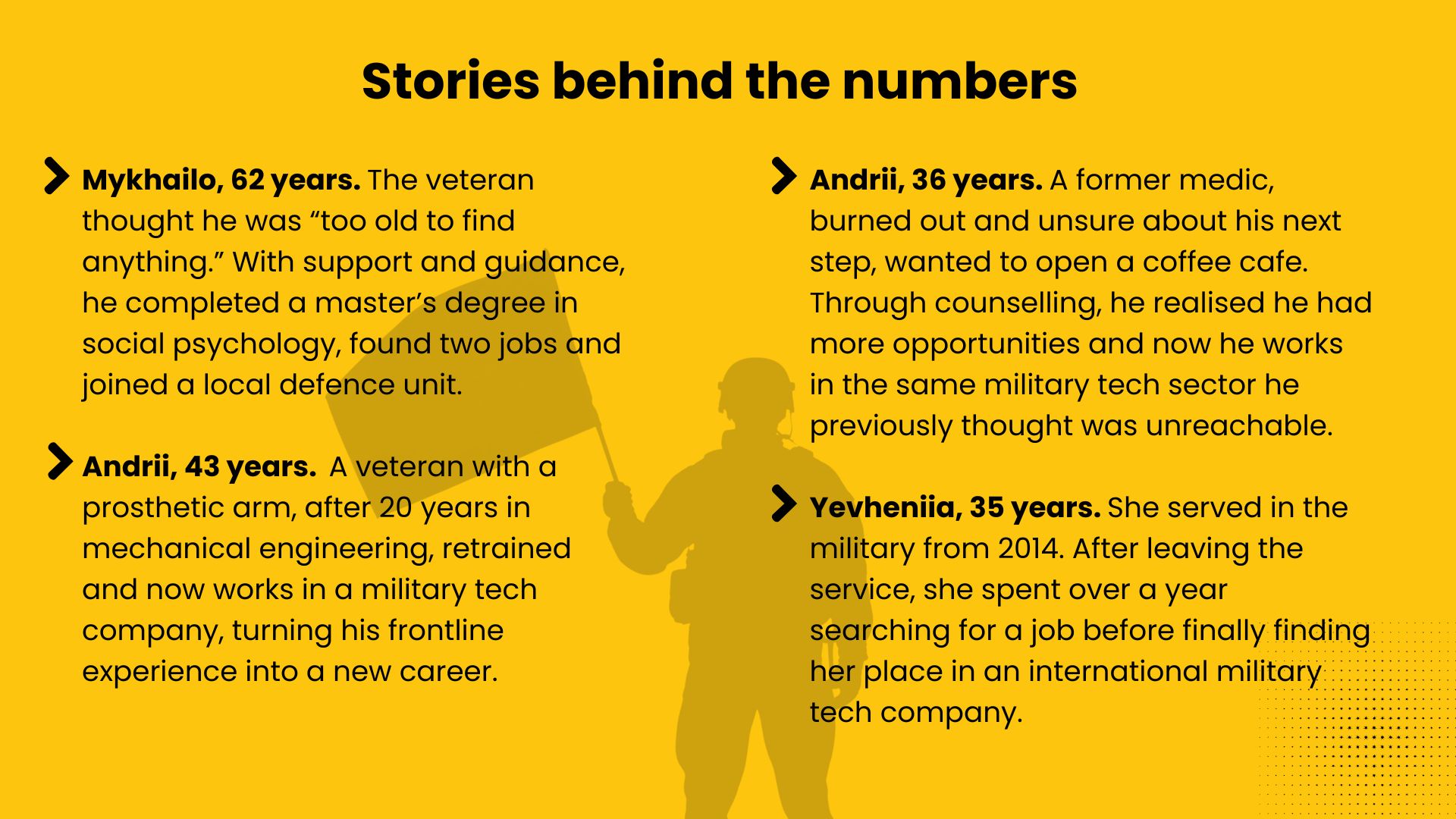
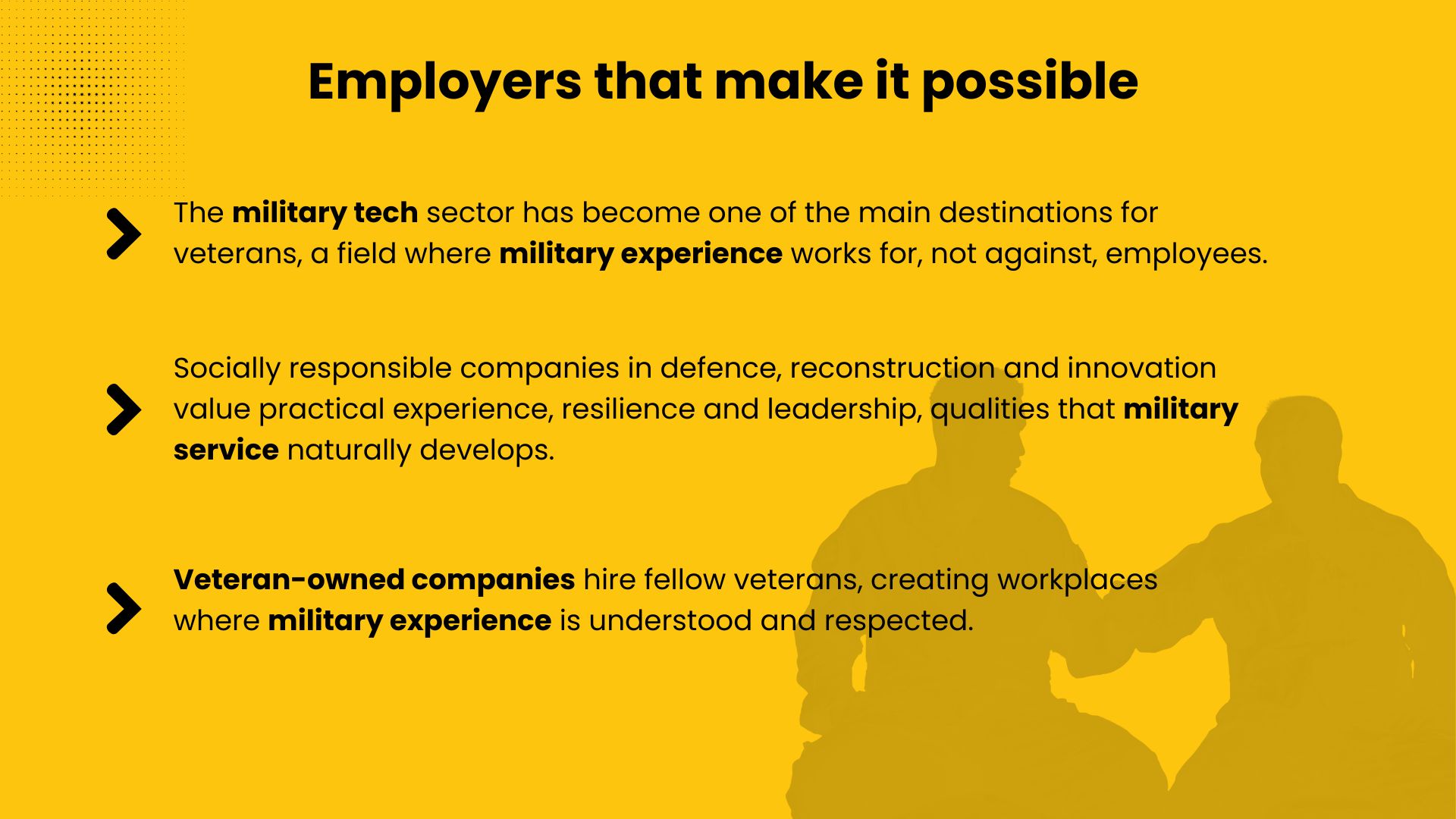
Veterans should be seen not as victims, but as agents of change. Most of them are not simply looking for jobs: they seek meaningful roles where their experience can be valued.
Unlike most countries, Ukrainian veterans do not return to peaceful lives and a stable post-war country, they come back to civilian life while the war is still going on and their experience comes from a full-scale war, not peacekeeping missions.
With no international model to follow,Ukraine is building its system of veteran reintegration from scratch,
developing practices that may one day serve as a guide for others.
What proves most effective in finding a new job and also a new purpose is not mass training or one-size-fits-all programs, but individualised, almost "handcrafted" support that helps each veteran build a personal strategy and the confidence to move forward, step by step.
We encourage you to discover more:
interviewed by
The article is produced by UkraineWorld with the support of the Askold and Dir Fund as a part of the Strong Civil Society of Ukraine - a Driver towards Reforms and Democracy project, implemented by ISAR Ednannia, funded by Norway and Sweden. The contents of this publication are the sole responsibility of UkraineWorld and can in no way be taken to reflect the views the Government of Norway, the Government of Sweden and ISAR Ednannia.
